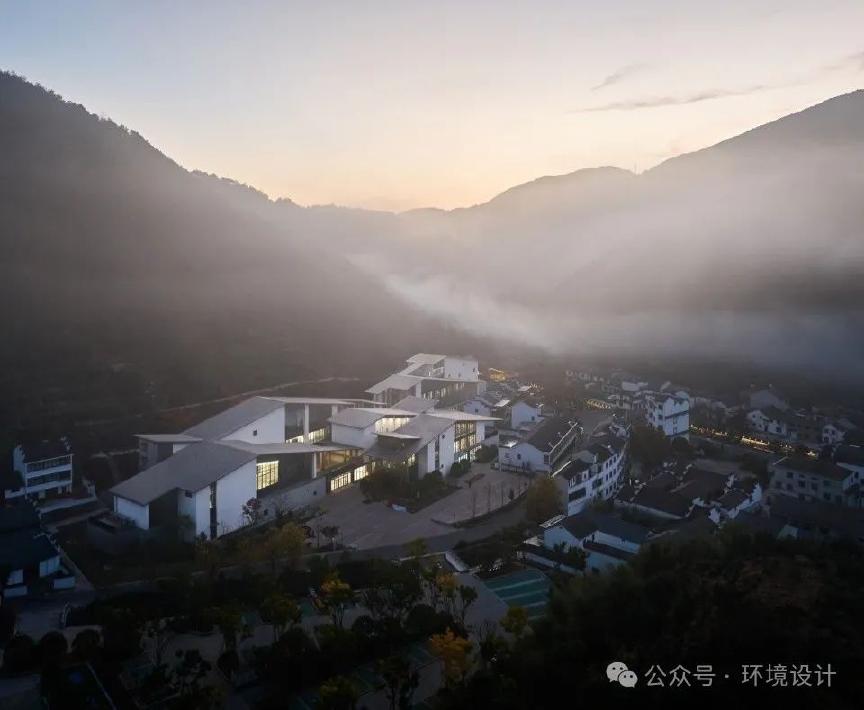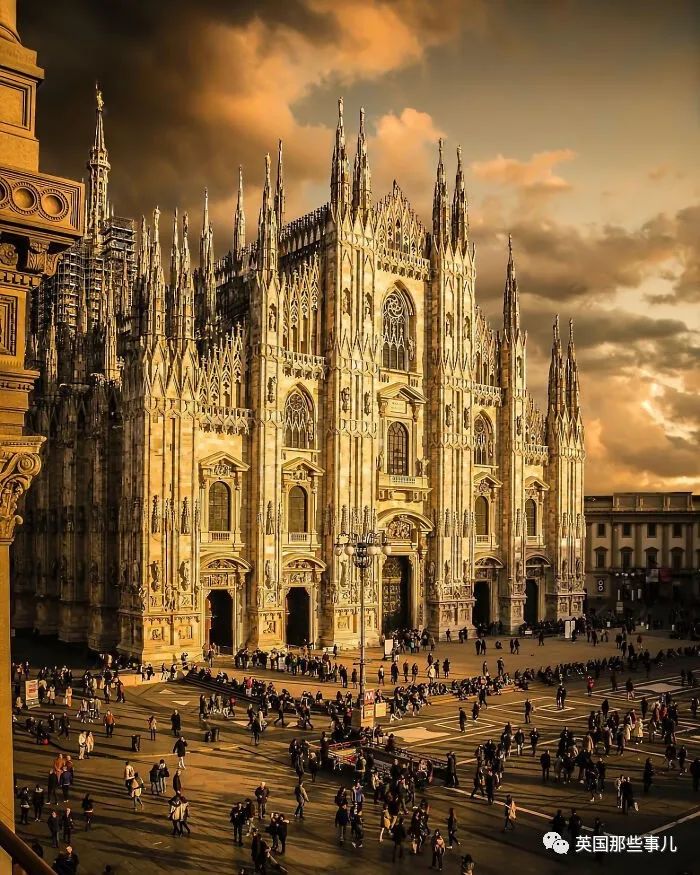Yahuang Village is located in Shihuang Town, Shengzhou City, Zhejiang Province, and is the birthplace of “People’s Diary”. More than twenty years ago, Li Chunyang, who was then the Party Secretary of Yahuang Township, encountered villagers seeking help during a visit. He took out his diary and carefully wrote down the wishes of the villagers. “The Diary of the People” was born in the fields of Yahuang from then on. The “People’s Diary” with the characteristics of “visiting hundreds of families, understanding their emotions, solving their difficulties, connecting their hearts, handling their affairs, and achieving their prosperity” and “Six Hundred Spirits” has gone from Yahuang to the whole country..

Overview of the Building © Aoguan Architectural Vision.
As a peaceful mountain town, Yahuang boasts a large area of Huizhou style architecture built against the mountains and rivers, blending the elegance of Jiangnan with the beautiful waters of Lingshan. Ancient bridges, gates, ancestral halls… scattered throughout the village. The village is surrounded by green mountains, with deep forests and lush bamboo. A Yahuang River runs from east to west, making it a beautiful countryside. The design aims to combine local ecological advantages to create a comprehensive red themed rural building that integrates commemorative display, multifunctional training, sightseeing tourism, and convenient services..
▼ Layer upon Layer Roofing System Intention © Hangzhou Local Architectural Design Firm and China Academy of Fine Arts Landscape Architecture Design and Research Institute Co., Ltd.
Aerial view of the building © Aoguan Architectural Vision.
Aerial view of the building from the southeast side © Aoguan Architectural Vision.
Originating from the rural environment itself, the design is endowed with more favorable factors due to its rich natural scenery, smart living space, and interesting life organization. Out of respect for the natural environment and living environment around Yahuang Village, while positioning the building as a “service-oriented” spatial functional role integrated into the daily lives of the people. In this way, the architecture can finally be embedded in the natural subject, harmoniously integrated with the rural subject, and achieved in the way of presenting the living subject..
▼ Volume generation analysis © Hangzhou Local Architectural Design Firm and China Academy of Fine Arts Landscape Architecture Design and Research Institute Co., Ltd.
The relationship between buildings and mountains © Aoguan Architectural Vision.
Entering from the southwest of the venue, the “People’s Diary” originates from the Comprehensive Experience Center, facing a stream and a mountain. The building itself opens up layer by layer in the form of a large mountain, and through the setting of the terrace gray space combined with the “breathing” facade form of transportation nodes, visitors’ vision does not stop at a one-sided and thin scene, but rather, as stated in “Lin Quan Gao Zhi”, the “far-reaching” of the three distances – “peering from the front of the mountain and behind the mountain, it is called profound. The profound meaning overlaps”. When writing an article on the word “qu”, there should be hidden and revealed, hidden and obvious, rising and falling, and the melody should be full of emotions..
▼ Layered Tiles – Roof System.



